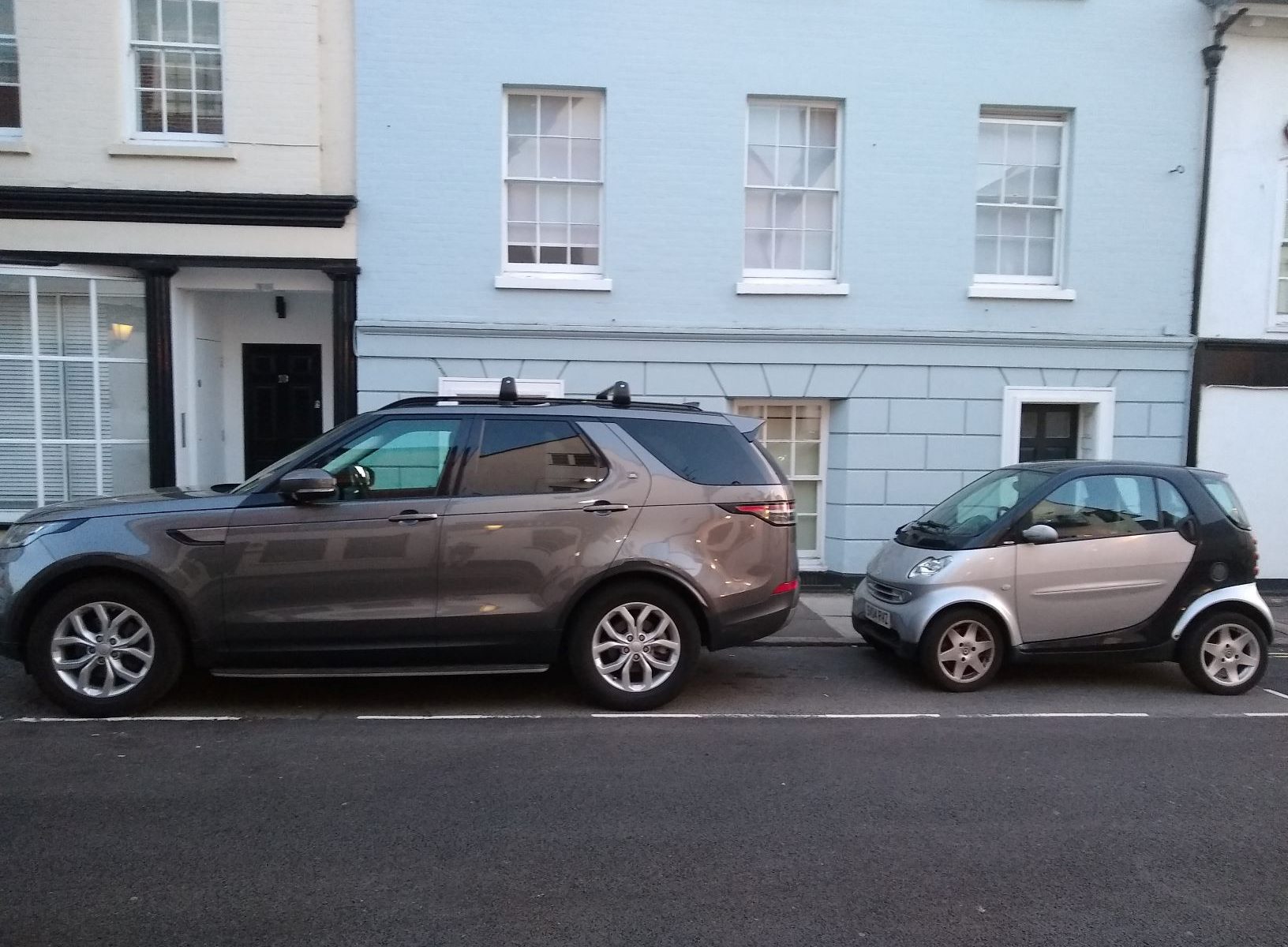Much of our destructive consumption patterns seem to boil down to what can be categorized as some kind of trend. The take-away coffee from Starbucks was once – and perhaps continues to be – some kind of a fashion accessory, originally something we saw celebrities clutching on shopping trips around Santa Monica in LA. The single use coffee cup, used for a matter of minutes before being tossed into landfill, is one of the most glaringly obvious emblems of our unsustainable consumption practices. And it seems that in the world of cars, a similar thing is happening. Take-away coffee offered the consumer a sense of micro-luxury, while in the world of motor vehicles, the SUV has succeeded in selling the idea of luxury and status symbol – as well as the notion of added safety. Just like the coffee cup which needlessly consumed resources and littered the planet, the SUV is part of an economic growth model to drive consumption – and as a result litter the air we breathe.

What’s so bad about SUVs?
In the past 10 years, SUVs have doubled their market share – making up a third of all new cars sold in Europe, and 50% of all new cars sold in the US. This surge has cemented their place as the second largest contributor to the rise in global emissions. In the UK ,transport accounts for around a third of total emissions, of which a third of that comes from cars (so approximately 11% of total emissions). This is already considerable, but worse lies ahead, with predictions that transport emissions will double by 2050.
SUVs have made a bad situation worse. Since they are heavier and less aerodynamic, they have a higher level of emissions when compared to a standard saloon car – around 25% percent more than a medium sized family car. With air pollution already a silent killer, and the climate crisis advancing at an alarming pace, this matters. To have even a chance of staying below 1.5C warming, globally, we will need to cut emissions in half by 2030 – just 10 years, we can’t afford to be burning fossil fuels recklessly.
The question of safety
Aside from the health and climate considerations, there’s a further problem – the question of their safety. The heavy chassis makes them more difficult to stop, and their sheer weight is more dangerous to both pedestrians and drivers. Their height makes them twice as likely to roll in crashes and twice as likely to kill pedestrians by inflicting greater upper body and head injuries. Likewise, the boxy shape gives drivers the idea that they are safer than they actually are and encourages them to take greater risks than they might in a traditional car. Despite the notion of greater safety, a driver is 11% more likely to die in a crash inside an SUV than a regular saloon.
Calls for a ban
The question of SUVs being dangerous was highlighted last year in an accident which killed four pedestrians in Germany. Some called for a total ban. But in the absence of this, better regulation would help. The shape and build of SUVs was originally modelled from trucks, and as it stands they are exempt from the same safety standards applied to passenger vehicles. The EU is making changes however, but the question of emissions remains.
Even if safety improves, what about the climate emergency?
With 200m of these vehicles globally (up from 35m a decade ago) and transport emissions set to double by 2050, more must be done to stop unnecessary pollution.
The car lobby clearly holds a lot of power, as the recent watering down to the EU’s hailed Green New Deal proved. They are estimated to spend 20 million a year on lobbying alone and have been successful in gaining concessions on emissions levels to be graded according to the size of the vehicle. As such, heavier vehicles are allowed higher emissions.
And what about the consumer?
While there still remain huge challenges in building the type of infrastructure for transportation that would allow a serious reduction in motor vehicles, there is little justification for choosing to drive a more dangerous and more polluting vehicle to get from A to B if it is largely about the sense of luxury or a status symbol. While car manufacturers have played their part – consumer preferences are the other side of the story. Perhaps there is a lack of awareness about the safety issues combined with the “invisible” nature of air pollution — and the often abstract nature of the climate emergency for those who aren’t suffering first hand, has meant that consumers are still buying SUVs in large numbers.
The stigma of excessive consumption
Greta Thunberg, leading by example, helped put the concept of Flyskam (flight shame) on the map. Following decades of low cost flying, the ethics of flying in the midst of a climate emergency is now part of the conversation. Could SUVs be the next to follow? Certainly when you consider that driving regularly will probably contribute to a quarter of your entire carbon footprint for the year, it should be a major consideration. We can no longer turn a blind eye to private luxury as just something we can have as part of our freedom as consumers, because the climate emergency is a shared emergency, and the stakes are too high. Simply put, the SUV cannot be a part of a world which has left it until the 11th hour to act on emissions. This is a time to be scaling back, not scaling up.
Further reading:
https://www.wired.com/story/suvs-are-worse-for-the-climate-than-you-ever-imagined/
https://www.iea.org/commentaries/growing-preference-for-suvs-challenges-emissions-reductions-in-passenger-car-market
https://www.theguardian.com/commentisfree/2019/sep/20/the-guardian-view-on-transport-emissions-the-trouble-with-planes-and-automobiles
https://ec.europa.eu/clima/policies/transport/vehicles/cars_en

